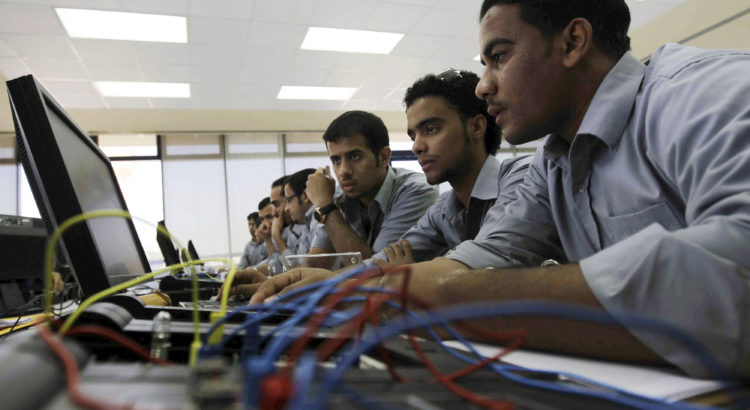Por: brookings.edu/Stavros Yiannouka and Zineb Mouhyi/04-04-2018
November 2017, at the bi-annual World Innovation Summit for Education (WISE) in Doha, Qatar, we held a roundtable with renowned school innovators from around the world. What was striking was the wide diversity of school models represented at the table. At one end of the spectrum was Mike Feinberg, co-founder of KIPP, a model with a focus on high expectations and building character enforced by a disciplined, structured approach to education. At the other end was Ramin Farhangi, co-founder of École Dynamique, a school in France based on the Sudbury Valley School, which emphasizes on educational freedom, democratic governance, and personal responsibility. At École Dynamique, children are free to organize and use their time as they please. The two schools could not be more different. Yet, by certain terms, they are both quite successful and have other schools emulating their models worldwide. We came out of that roundtable ever more convinced that when it comes to education, there is no one-size-fits-all model.
The latest Brookings report “Can We Leapfrog? The Potential of Education Innovations to Rapidly Accelerate Progress” analyzes 3,000 education innovations from around the world, showing just how effective widely different approaches can be. Yet, governments still search for the oneeducation system that will trump them all and produce the best outcomes for every child. Instead, governments should consider developing a system of different school models that provide opportunities for flexibility. The Netherlands exemplifies this approach, giving all public schools a high degree of independence, so they can define their own curriculum, provided they follow certain standards established by the government.
So, why should governments consider moving from a school system to a diversified system of schools? We believe there are (at least) three good reasons for doing so:
Reason 1: Different students have different needs.
By pursuing a system of schools, governments can tailor individual schools to meet the needs of different sets of students. For instance, although U.S. charter schools have on average not delivered better results than public schools, a growing body of evidence indicates that urban charter schools have had large positive effects on the test scores of disadvantaged students. A likely reason is that charter schools targeting disadvantaged students have devised specific strategies to address their students’ needs—including, longer school hours, higher standards, and emphasis on character development. Each school tweaks these parameters, and others, based on what is appropriate for their particular students. Again, it is important to emphasize that charter schools are one model for giving autonomy to schools.
Moreover, students learn best when their learning is adapted to their context. UNESCO reports that “inadequate understanding of the development context of an education system is a fundamental cause of its irrelevance to geographical and temporal development contexts, its irrelevance to individual and collective development needs, its ineffectiveness for purpose and therefore its poor quality.” In the name of equality, a uniform education system ends up systematically underserving a portion of the population, typically the least advantaged.
Reason 2: A diversified portfolio of schools is better equipped to deal with an uncertain future.
Anyone familiar with basic finance knows that the key to successfully lowering the risk of your portfolio is to diversify it. In a world where our ability to predict is the future is mediocre at best, why should the future of an entire nation bet on a single approach to education? And how is it beneficial for a country to adopt a one-size-fits-all model of education, particularly when this approach is shown to produce very disparate outcomes?
In discussions on how to prepare students for an unpredictable future, we keep hearing “don’t prepare students for something; prepare them for anything.” We would argue the same thing holds true for school systems: don’t design school systems for something; design them for anything. In an era of personalized learning, we wonder whether we can consider personalized schooling as the possible next step forward. A system of schools with diverse options should logically be much more resilient and capable of coping with uncertainty.
Reason 3: A systems of schools would allow for more experimentation and innovation.
For education innovations to live up to their potential of leapfrogging educational progress, governments need to embrace innovations and find ways to incorporate them into education systems. As the Brookings report points out, “By adding an expanding set of options for how to approach education, governments can open up fruitful avenues for leaping ahead that perhaps were closed before.”
“Government innovation” almost sounds like an oxymoron. Indeed, governments around the world are known for their complex bureaucracy, slowness, and risk aversion—not exactly what you would call a good recipe for innovation. However, as seen in Finland and Singapore, for example, governments can enable and embed a culture of change, adaptation, and innovation in the governance of education. This leads to a higher tolerance for risks, failures are controlled and on a much smaller scale. This also allows for a dramatic increase in the number of actors involved in the innovation process, naturally leading to more innovations. Finally, this experimentation process could potentially uncover very effective approaches that could be applicable on a wide scale.
Increasingly, education stakeholders are calling for a flexible, resilient, and innovative education ecosystem, as highlighted in the Millions Learning report by Brookings and in the Learning Generation report by the Education Commission. We believe that in order to have this ecosystem, we need to leave the one-size-fits-all school system behind and embrace a system of schools with diverse co-existing schools like KIPP and Sudbury Valley, as well as schools focused on arts or Science, Technology, Engineering and Mathematics (STEM)—all putting the student at the center and following centrally agreed upon standards.
*Fuente: https://www.brookings.edu/blog/education-plus-development/2018/04/03/there-is-no-one-size-fits-all-school-model-developing-a-flexible-and-innovative-education-ecosystem/







 Users Today : 16
Users Today : 16 Total Users : 35460399
Total Users : 35460399 Views Today : 34
Views Today : 34 Total views : 3419197
Total views : 3419197